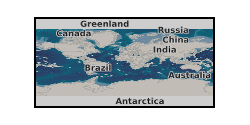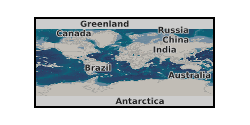Crevasses
Type of resources
Available actions
Topics
Keywords
Contact for the resource
Provided by
Years
Formats
Representation types
Update frequencies
-

There is a report highlighting the approach for model construction and recommendations for any future work. There is an excel file pf processed data including time, centrifuge speed, water pressure, and temperature data. There is a zip folder containing photographs of the models, the instrumentaiton and granular ice used for model construction There is a zip folder containing the raw data.
-

This image dataset was captured as part of the operation of an automated weather station at the Virkisjökull-Falljökull Glacier, SE Iceland. The station formed part of the BGS Iceland Glacier Observatory network of sensors, deployed between 2009 and 2020 in order to characterise and identify glacial, geomorphological and hydrological drivers and processes and their timescales across the deglaciating Virkisjökull-Falljökull catchment in SE Iceland. This image time series was generated alongside the continuous operation of two further weather stations, river gauging, a network of groundwater level gauges and numerous other forms of monitoring. The records presented here begin in September 2011 with the installation of the camera on the weather station, and continue to December 2019. The data complements the published groundwater and river gauging datasets published here, and will be of use to researchers, teachers and students wishing to see an excellent example of glacier flow, or those interested in the processes observed in a rapidly deglaciating landscape, including anyone interested to follow up on the various research studies published from this site in the international literature. The BGS project was led and coordinated by Dr Jez Everest, and during earlier years Tom Bradwell (Uni of Stirling, formerly BGS). Technical support and implementation was provided by Heiko Buxel and Tom Shanahan. The dataset is not fully continuous as certain periods were lost due to equipment downtime. Enquiries are welcome and should be directed to Dr Everest.
-

These data consist of spatial and temporal datasets for 11 different small-scale laboratory experiments of fluid-driven fractures, described in the paper Up, down, and round again: the circulating flow dynamics of flux-driven fractures (Chalk and Kavanagh, accepted in Physics of Fluids, February 2024). These experiments, conducted at the University of Liverpool, are analogue models of natural fluid-driven fractures in glacial and magmatic settings. Fractures were created by injecting water or silicone oil into transparent gelatine at a constant rate. The total experimental data set consists of 11 different experiments named: S1,S2,S3,S4,S5,W1,W2,W3,W4,SH,WH. S experiments involve the injection of silicone oil, and W experiments involve the injection of water. The raw data consist of a temporal series of jpegs from camera recordings of each experiment, located in the subdirectory "frames". For all experiments except for WH and SH, the data also consist of a temporal series of csv files containing spatial velocity data of the internal fluid flow, located in the subdirectory "PIV". These data are described in further detail in the metadata file in the raw data directory.
-

This image dataset was captured as part of the operation of an automated weather station at the Virkisjökull-Falljökull Glacier, SE Iceland. The station formed part of the BGS Iceland Glacier Observatory network of sensors, deployed between 2009 and 2020 in order to characterise and identify glacial, geomorphological and hydrological drivers and processes and their timescales across the deglaciating Virkisjökull-Falljökull catchment in SE Iceland. This image time series was captured at (WGS-84) 63°58’12.78?N 16°47’5.64?W, on a lateral moraine sequence adjacent to the glacier icefall and were generated alongside the continuous operation of two further weather stations, river gauging, a network of groundwater level gauges and numerous other forms of monitoring. The records presented here begin in September 2011 with the installation of the camera on the weather station, and continue to February 2018. The data complements the published groundwater and river gauging datasets published here, and will be of use to researchers, teachers and students wishing to see an excellent example of glacier flow, or those interested in the processes observed in a rapidly deglaciating landscape, including anyone interested to follow up on the various research studies published from this site in the international literature. The BGS project was led and coordinated by Dr Jez Everest, and during earlier years Tom Bradwell (Uni of Stirling, formerly BGS). Technical support and implementation was provided by Heiko Buxel and Tom Shanahan. The dataset is not fully continuous as certain periods were lost due to equipment downtime. Enquiries are welcome and should be directed to Dr Everest.
 NERC Data Catalogue Service
NERC Data Catalogue Service